What it was like being a Boy Scout in the 1950s and 60s in South Australia
WE learnt about camping, tents, how to start a fire, knots, building rafts and identifying trees. As kids, we chopped our own wood and we all had our own knives. We were Boy Scouts — even if I was happier at home.

Kids
Don't miss out on the headlines from Kids. Followed categories will be added to My News.
- What it was like to be a kid in the 1950s and 60s
- The story of Postcards, an SA TV institution
- How refrigerators have changed
- How kids won the wild west in the 1950s
A LONG time ago, for a brief period, I was a Boy Scout.
There are several reasons why my scouting experience turned out to be so short-lived. One had to do with my inability to come to grips with the great outdoors.
I was always a more studious type of kid, happier to sit and read a book than build a campfire.
The other had to do with my entrepreneurial nature for fundraising, but more about that later. When I was about 9 or 10, most of my friends were Cubs or Scouts and I was eventually coerced into joining the local troop.
We would ride our bikes to the Scout hall on a Friday night after tea for the weekly meeting. The pack leader was called Akela, while some of the other leaders also had names from Rudyard Kipling’s The Jungle Book, like “Drop Bear” and “Nuska”.

Meetings always started with an inspection of our uniform and as we stood to attention we were asked to “DYB, DYB, DYB”, to which we all responded with “We’ll DOB, DOB, DOB” (Do Your Best and We’ll Do Our Best).
We also had a Scout Promise, which went along the lines of: “I promise to always do my best, do my duty to God and the Queen and obey the Scout Law.”
I had no idea of what the Scout Law was but I agreed to obey it every week.
Our scouting activities all came from Robert Baden-Powell’s book Scouting for Boys, which he wrote in 1908 and which became the basis of the worldwide scouting and Girl Guides movement.
We learned about camping, how to start a fire, tying knots, using axes, building rafts and how to identify various trees.
I can never remember rubbing two sticks together to start a fire — but I might have been away that night.

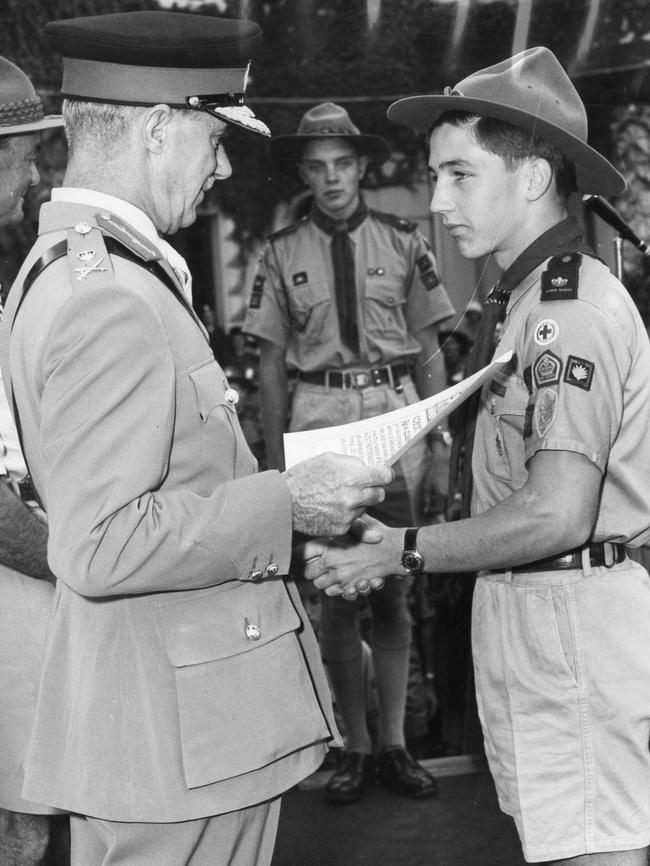
Sometimes we just played games like “brandy” or “British bulldog” (both games are now banned in playgrounds) or we rode our bikes around the park in the dark.
Thinking back, it was always pretty loose — or maybe we had a very casual Akela.
To measure our progress, there were various tests we had to pass which could lead to a badge award.
All the badges were cloth and hand-sewn on to the uniform by Mum. There was a full series of tests leading up to first class status which I could never have achieved because I never learned to swim.
I can only recall going on a Scout camp once, somewhere where there were no facilities at all. We slept in a tent which took six occupants.
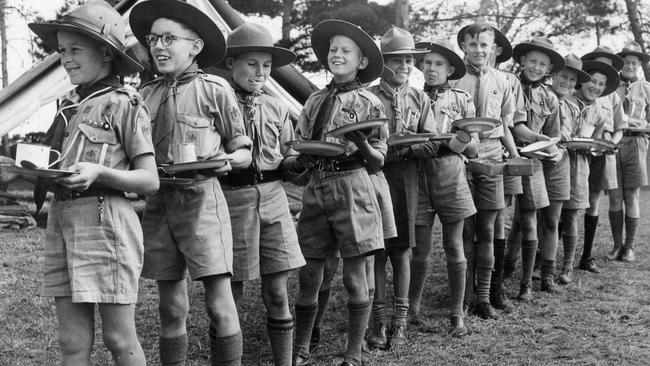
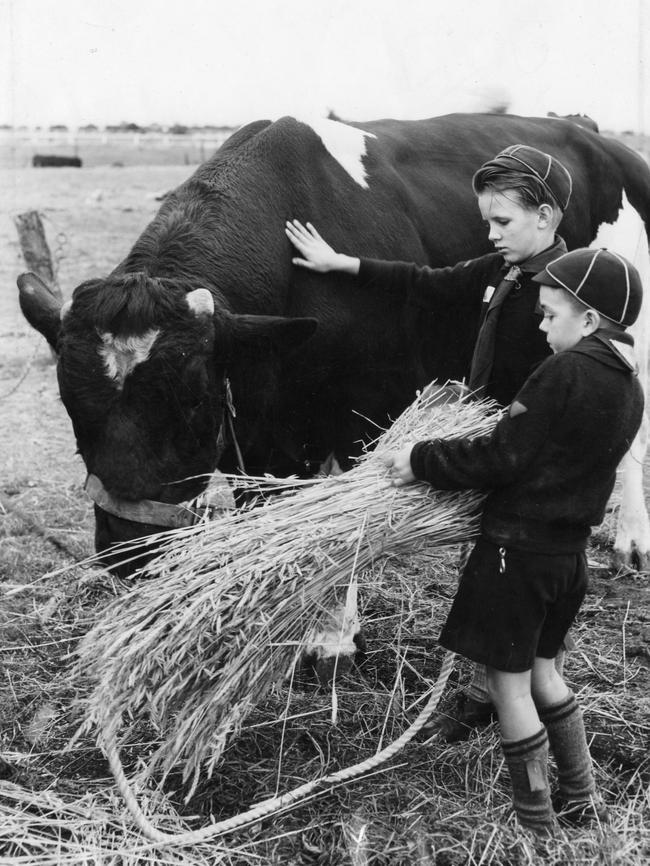
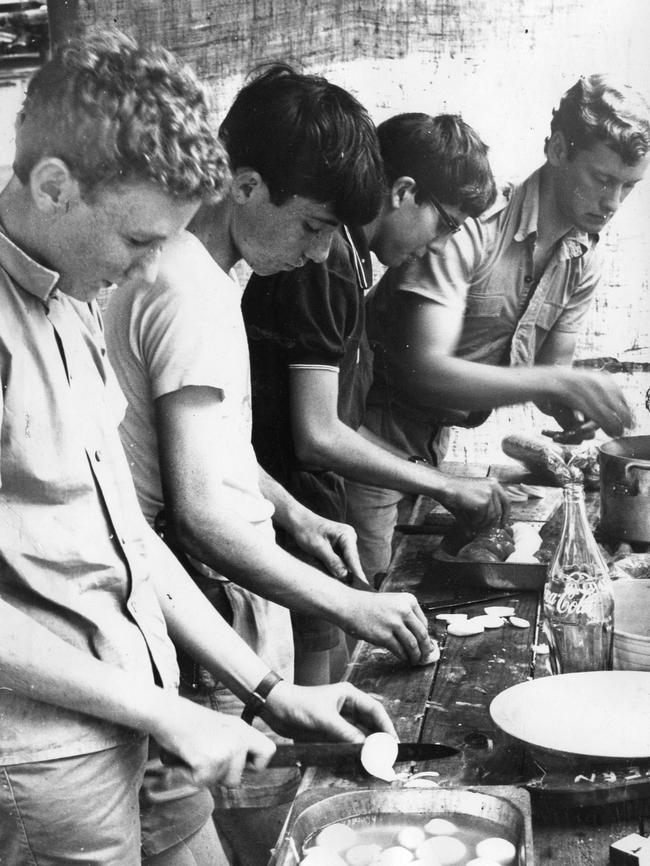
We had wooden tent poles and lots of lines which were fixed to the ground with tent pegs. It was a huge operation to erect the thing or to take it down and from memory it took a full day to put it up.
The tent didn’t have a ground sheet so we each had to take our own, along with a sleeping bag and a kit bag for personal items. Our camp was very primitive. We had to go out searching for wood to build a fire on which we boiled the water and cooked.
Drinking water was from a canvas water bag hung from a tree and washing up water from a container filled with cold water.
We dug a hole for a lavatory and I don’t think we bathed for at least a week.
There were no health and safety rules back then. We used very sharp axes to chop wood (without safety glasses) for the fire and we all had a sheath knife on our belt.
One of the games we devised was throwing our knife at a target painted on a tree. I can’t recall exactly how many adults were at the camp but there seemed to be very little supervision and a fair bit of smoking by some of the older boys.
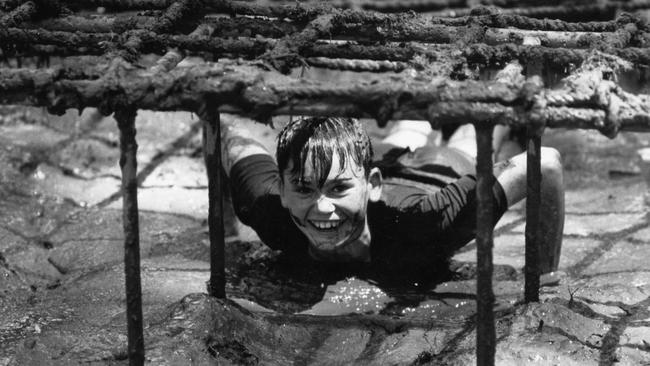
The other big annual event for the troop was “Scout Job Week” or “Bob-a-Job”.
This meant donning the uniform on the weekend and helping out with tasks from mowing the lawn to sweeping the veranda. In exchange for a small payment, usually a shilling, we would roam the neighbourhood, knock on the doors of complete strangers and ask them if we could lend a hand. All the money raised was handed in at the hall and provided the funds needed for camping trips, scouting equipment and uniforms.
To my knowledge, there was never any concern expressed by our parents about the dangers associated with a large group of young boys wandering around offering to do almost anything for a “bob”.
Indeed, my scouting days came to an unfortunate end when, one weekend, my boyhood friend and I decided to earn some extra cash.
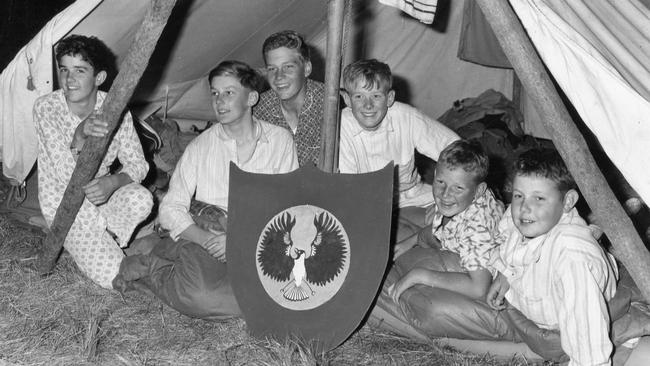
We dressed in our Scout uniforms and knocked on doors asking for any old bottles.
We dragged our billy carts around the neighbourhood collecting beer and soft drink bottles to sell to the bottle-o.
The problem was we had no intention of handing the money in at the Scout hall and kept it.
When word somehow got back to Akela of our self-initiated fundraising event, he wanted to know where the money was.

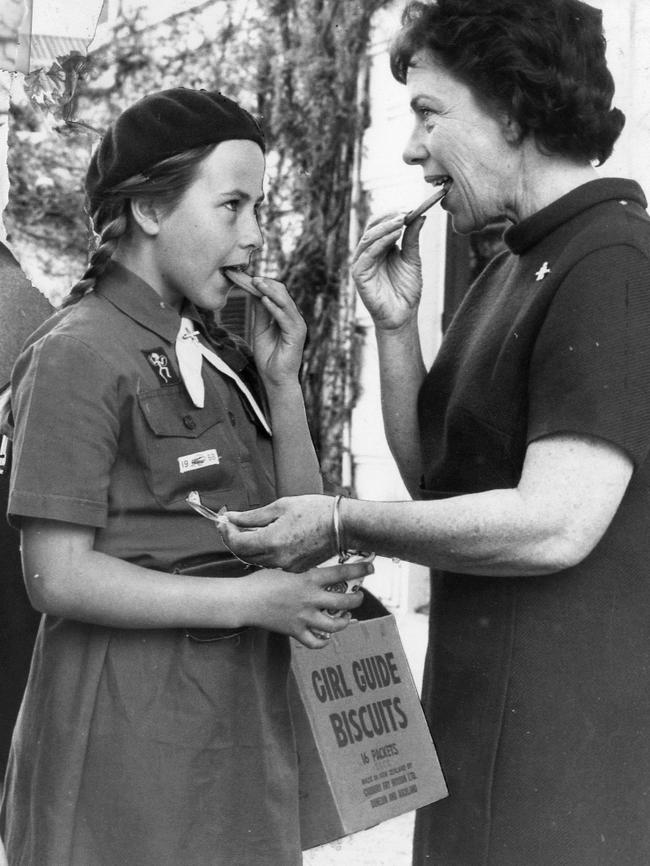
Alas, it had already been spent on lollies and comics and so Jimmy and I left the Scouts shortly after. Many of my friends stayed on and all my sisters were at one time either Brownies or Girl Guides.
Our parents always encouraged participation in well-known and respected traditional institutions and would never question the motives of the people who ran them.
What are your memories of the Scouts or Girl Guides?
Bob Byrne is the author of Adelaide Remember When and posts memories of Adelaide every day on facebook.com/adelaiderememberwhen/


